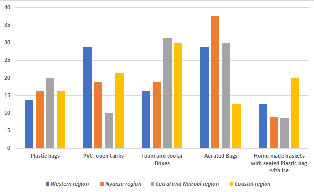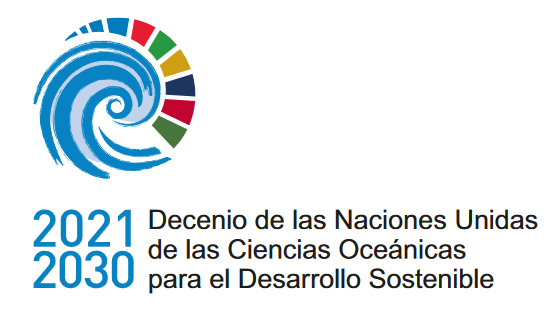Perspectivas acuáticas: actitudes y percepciones de los actores en las prácticas de transporte de peces vivos dentro del sector pesquero de Kenia
DOI:
https://doi.org/10.47193/mafis.3722024010507Palabras clave:
Transporte vivo, acuicultura, calidad del agua, bienestar de los peces, actitudes y percepciones públicasResumen
Los peces vivos tienen una gran demanda en todo el mundo, especialmente en China, donde los estándares de calidad se alinean con las preferencias de los consumidores. En Kenia, los debates sobre peces vivos, particularmente en regiones ricas en acuicultura, son puntos focales. Sin embargo, la falta de un enfoque sistemático para el transporte de peces vivos plantea desafíos para las partes interesadas. Esta investigación explora las actitudes y percepciones de las partes interesadas en Kenia con respecto a la adopción del transporte de peces vivos, arrojando luz sobre los procedimientos de transporte y los desafíos del sector. Utilizando un diseño de investigación descriptivo, se recopilaron datos primarios de diversos actores de la acuicultura a través de un cuestionario, abordando sus conocimientos, percepciones y actitudes hacia el transporte de peces vivos en el país. El estudio revela patrones variados en Kenia, influenciados por el propósito y la distancia. Los coches privados ocupan un lugar destacado con 26,3%, con Nyanza y Mombasa a la cabeza con 35%. Las furgonetas modificadas prevalecen en las regiones Central-Nairobi y Occidental (25% y 22,5%, respectivamente), mientras que el transporte público está muy extendido, especialmente en Central y Nairobi (25%). Los vehículos para peces vivos construidos expresamente dominan en Western y Nyanza (20% y 17,5%, respectivamente). Los crustáceos como langostas y cangrejos se exportan principalmente desde la región Costa (27,5%). En general, los participantes evaluaron su conocimiento sobre el transporte de peces vivos como moderado, con una comprensión básica del bienestar de los peces. Los comentarios indican prácticas comunes en el transporte de peces vivos en Kenia, como tanques sellados, bolsas de plástico y vehículos especialmente diseñados. Las fluctuaciones de temperatura y oxígeno plantean un desafío importante durante el transporte en todas las regiones, particularmente en Mombasa y Kisumu. El uso de anestésicos, especialmente para el consumo de pescado, es poco frecuente. El estudio reveló percepciones favorables de las partes interesadas sobre el transporte y el bienestar de los peces vivos, lo que indica una adopción temprana. Se recomienda realizar investigaciones adicionales sobre el bienestar de los peces, las mejores prácticas de gestión, los avances tecnológicos y los estudios interdisciplinarios para mejorar la sostenibilidad del sector del transporte de peces vivos y el bienestar de los peces en Kenia.
Descargas
Referencias
Apine E, Turner LM, Rodwell LD, Bhatta R. 2019. The application of the sustainable livelihood approach to small scale-fisheries: the case of mud crab Scylla serrata in South west India. Ocean Coast Manage. 170: 17-28. DOI: https://doi.org/10.1016/j.ocecoaman.2018.12.024
Asiedu B, Failler P, Amponsah SKK, Okpei P. 2023. Fishers’ lives matter: social issues in small-scale fisheries migration of Ghana. Mar Fish Sci. 36 (2): 119-135. DOI: https://doi.org/10.47193/mafis.3622023010503
Aura CM, Nyamweya CS, Owili M, Gichuru N, Kundu R, Njiru JM, Ntiba MJ. 2020. Checking the pulse of the major commercial fisheries of lake Victoria Kenya, for sustainable management. Fish Manage Ecol. 27 (4): 314-324. DOI: https://doi.org/10.1111/FME.12414
Ball EE, Goode KJ, Weber MJ. 2020. Effects of transport duration and water quality on age-0 walleye stress and survival. N Am J Aquacult. 82 (1): 33-42. DOI: https://doi.org/10.1002/NAAQ.10114
Berka R. 1986. The transport of live fish. A review. EIFAC Technical Papers. 48. 52 p.
Calhoun S, Conway F, Russell S. 2016. Acknowledging the voice of women: implications for fisheries management and policy. Mar Policy. 74: 292-299. DOI: https://doi.org/10.1016/j.marpol.2016.04.033
Dawo AB, Salosso Y, Pasaribu W, Studi P, Perairan B, Kelautan P, Perikanan D. 2023. Inventarisation of parasites in catfish (Clarias sp.) and tilapia (Oreochromis niloticus) in the regency of North Central Timor. J Fish Mar Res. 7 (1): 22-29. DOI: https://doi.org/10.21776/UB.JFMR.2023.007.01.3
de Araújo ERL, Barbas LAL, Ishikawa CM, de Carla Dias D, Sussel FR, de Almeida Marques HL, Tachibana L. 2018. Prebiotic, probiotic, and symbiotic in the diet of Nile tilapia post-larvae during the sex reversal phase. Aquacult Int. DOI: https://doi.org/10.1007/s10499-017-0201-7
Deng GT. 2020. Assessment of factors affecting fish production and marketing in Gambella Region, Ethiopia. Sci World J. DOI: https://doi.org/10.1155/2020/5260693
Devkota H, Jha DK, Joshi TP, Shrestha S, Bhandari MP, Poudel N. 2023. Exploration of sustainable live fish business in Nepal. J Agric Environ. 24: 137-148. DOI: https://doi.org/10.3126/AEJ.V24I01.58180
Erikson U, Rosten C, Klebert P, Aspaas S, Rosten T. 2022. Live transport of Atlantic salmon in open and closed systems: Water quality, stress and recovery. Aquacult Res. 53 (11): 3913-3926. DOI: https://doi.org/10.1111/ARE.15895
[FAO] Food and Agriculture Organization of the United Nations. 2022. The state of the world fisheries and aquaculture. Towards blue transformation. Rome: FAO. DOI: https://doi.org/10.4060/cc0461en
Farrell AP, Tang S, Nomura M, Brauner CJ. 2010. Toward improved public confidence in farmed fish: a Canadian perspective on fish welfare during marine transport. J World Aquacult Soc. 41 (2): 225-239. DOI: https://doi.org/10.1111/J.1749-7345.2010.00350.X
Franks B, Ewell C, Jacquet J. 2021. Animal welfare risks of global aquaculture. Sci Adv. 7 (14): eabg0677. DOI: https://doi.org/10.1126/sciadv.abg0677
Garrett ES, Lima Dos Santos C, Jahncke ML. 1997. Public, animal, and environmental health implications of aquaculture. Emerg Infect Dis. 3 (4): 453-457.
Genschick S, Mekkawy W, Rossignoli C, Benzie JAH. 2021. Growth performance of three strains of Nile tilapia (Oreochromis niloticus) on four different feeds in Western and Central Kenya. Aquacult Rep. 20, 100701. DOI: https://doi.org/10.1016/J.AQREP.2021.100701
Gomes LC, Chagas EC, Brinn RP, Roubach R, Coppati CE, Baldisserotto B. 2006. Use of salt during transportation of air breathing pirarucu juveniles (Arapaima gigas) in plastic bags. Aquaculture. 256 (1-4): 521-528. DOI: https://doi.org/10.1016/j.aquaculture.2006.02.004
Harmon TS. 2009. Methods for reducing stressors and maintaining water quality associated with live fish transport in tanks: a review of the basics. Rev Aquacult. 1 (1): 58-66. DOI: https://doi.org/10.1111/J.1753-5131.2008.01003.X
Hood Y, Sadler J, Poldy J, Starkey CS, Robinson AP. 2019. Biosecurity system reforms and the development of a risk-based surveillance and pathway analysis system for ornamental fish imported into Australia. Prev Vet Med. 167: 159-168. DOI: https://doi.org/10.1016/j.prevetmed.2018.11.006
Iversen M, Finstad B, Nilssen KJ. 1998. Recovery from loading and transport stress in Atlantic salmon (Salmo salar L.) smolts. Aquaculture. 168 (1-4): 387-394. DOI: https://doi.org/10.1016/S0044-8486(98)00364-0
Jia B, St-Hilaire S, Stryhn H, Yu J, Groman DB, Gardner IA. 2016. Analysis of transaction records of live freshwater finfish in China: a case study of customers’ claims of fish mortality using cross-classified modeling. Aquacult Rep. 4: 150-155. DOI: https://doi.org/10.1016/J.AQREP.2016.10.003
Jiang B, Tang W, Cui L, Wei Y. 2023. Factors influencing Chinese public attitudes toward farm animal welfare. Front Psychol. 14: 1049530. DOI: https://doi.org/10.3389/fpsyg.2023.1049530
Kaliba AR, Ngugi CC, MacKambo J, Quagrainie KK. 2007. Economic profitability of Nile tilapia (Oreochromis niloticus L.) production in Kenya. Aquacult Res. 38 (11): 1129-1136. DOI: https://doi.org/10.1111/J.1365-2109.2007.01772.X
Kimani P, Wamukota A, Manyala JO, Mlewa CM. 2020. Factors influencing financial performance in marine small-scale fisheries value chain in Kenya. Mar Policy. 122. DOI: https://doi.org/10.1016/j.marpol.2020.104218
King HR. 2009. Fish transport in the aquaculture sector: an overview of the road transport of Atlantic salmon in Tasmania. J Vet Behav. 4 (4): 163-168. DOI: https://doi.org/10.1016/J.JVEB.2008.09.034
Knight S, Barnett L. 2008. Justifying attitudes toward animal use: a qualitative study of people’s views and beliefs. Anthrozoos. 21 (1): 31-42. DOI: https://doi.org/10.2752/089279308X274047
Krishnan M, Birthal PS. 2002. Aquaculture development in India: an economic overview with special reference to coastal aquaculture. Aquacult Econ Manage. 6 (1-2): 81-96. DOI: https://doi.org/10.1080/13657300209380305
Lekang O. 2019. Transport of live fish. In: Lekang O, editor. Aquaculture engineering. Willey Blackwell. p. 419-430. DOI: https://doi.org/10.1002/9781119489047.CH23
[MoALF] Ministry of Agriculture, Livestock, Fisheries. 2023. Live Fish. (n.d.). [accessed 2023 Dec 7]. https://kilimo.go.ke/live-fish/.
Manuel R, Boerrigter J, Roques J, van der Heul J, van den Bos R, Flik G, van de Vis H. 2014. Stress in African catfish (Clarias gariepinus) following overland transportation. Fish Physiol Biochem. 40 (1): 33-44. DOI: https://doi.org/10.1007/S10695-013-9821-7
Mphande J, Hasimuna OJ, Kikamba E, Maulu S, Nawanzi K, Phiri D, Chibesa M, Siankwilimba E, Phiri CJ, Hampuwo BM, et al. 2023. Application of anaesthetics in fish hatcheries to promote broodstock and fish seed welfare in Zambia. Cogent Food Agric. 9 (1). DOI: https://doi.org/10.1080/23311932.2023.2211845
Munguti JM, Kim JD, Ogello EO. 2014. An overview of Kenyan aquaculture: current status, challenges, and opportunities for future development. Fish Aquat Sci. 17 (1): 1-11. DOI: https://doi.org/10.5657/FAS.2014.0001
Munguti JM, Nairuti R, Iteba JO, Obiero KO, Kyule D, Opiyo MA, Abwao J, Kirimi JG, Outa N, Muthoka M, et al. 2022. Nile tilapia (Oreochromis niloticus Linnaeus, 1758) culture in Kenya: emerging production technologies and socio‐economic impacts on local livelihoods. Aquacult Fish Fish. 2 (4): 265-276. DOI: https://doi.org/10.1002/AFF2.58
Muzaddadi AU, Ahmad T, Monika Monika, Nanda SK. (2017). Live table fish transportation - a means of innovative value addition in the fish retail markets of Ludhiana, Punjab. Indian J Fish. 64: 249-253. DOI: https://doi.org/10.21077/IJF.2017.64.special-issue.76296-39
Nair VR, Parvathy U, Jithin TJ, Binsi PK, Ravishankar CN. 2023b. Live transportation of food fishes: current scenario and future prospects. Curr Sci. 124 (4): 418-425.
Ndanga LZB, Quagrainie KK, Dennis JH. 2013. Economically feasible options for increased women participation in Kenyan aquaculture value chain. Aquaculture. (414-415): 183-190. DOI: https://doi.org/10.1016/j.aquaculture.2013.08.012
Neira I, Engle CR, Ngugi C. 2009. Economic and Risk analysis of tilapia production in Kenya. J Applied Aquacult. 21 (2): 73-95. DOI: https://doi.org/10.1080/10454430902892842
Niyibizi L, Vidakovic A, Norman Haldén A, Rukera Tabaro S, Lundh T. 2022. Aquaculture and aquafeed in Rwanda: current status and perspectives. J Appl Aquacult. 35 (3): 743-764. DOI: https://doi.org/10.1080/10454438.2021.2024315
Njiru JM, Aura CM, Okechi JK. 2019. Cage fish culture in Lake Victoria: a boon or a disaster in waiting? Fish Manage Ecol. 26 (5): 426-434. DOI: https://doi.org/10.1111/FME.12283
Ntakirutimana R, Syanya FJ, Mwangi P. 2023. Exploring the impact of probiotics on the gut ecosystem and morpho-histology in fish: current knowledge of tilapia. Asian J Fish and Aquat Res. 25 (3): 93-112. DOI: https://doi.org/10.9734/AJFAR/2023/V25I3670
O’Brien BC, Harris IB, Beckman TJ, Reed DA, Cook DA. 2014. Standards for reporting qualitative research: a synthesis of recommendations. Acad Med. 89 (9): 1245-1251. DOI: https://doi.org/10.1097/ACM.0000000000000388
Opiyo MA, Marijani E, Muendo P, Odede R, Leschen W, Charo-Karisa H. 2018. A review of aquaculture production and health management practices of farmed fish in Kenya. Int J Vet Sci Med. 6 (2): 141-148. DOI: https://doi.org/10.1016/J.IJVSM.2018.07.001
Otieno NE. 2019. Economic impact of predatory piscivorous birds on small-scale aquaculture farms in Kenya. Aquacult Rep. 15: 100220. DOI: https://doi.org/10.1016/J.AQREP.2019.100220
Otieno NE, Wasonga DV, Imboko D. 2021. Pond-adjacent grass height and pond proximity to water influence predation risk of pond fish by amphibians in small fish ponds of Kakamega County, western Kenya. Hydrobiologia. 848 (8): 1795-1809. DOI: https://doi.org/10.1007/S10750-021-04551-8
Pakhira C, Nagesh TS, Abraham TJ, Dash G, Behera S. 2015. Stress responses in rohu, Labeo rohita transported at different densities. Aquacult Rep. 2: 39-45. DOI: https://doi.org/10.1016/J.AQREP.2015.06.002
Park S, Lim S-W. 2014. A study about civil liability of live fish transportation contract. J Fish Mar Sci Educ. 26 (5): 959-965. DOI: https://doi.org/10.13000/JFMSE.2014.26.5.959
Peer Mohamed M, Devaraj M. 1997. Transportation of live finfishes and shellfishes. CMFRI Special Publication. 66: 1-43.
Prabu E, Rajagopalsamy CBT, Ahilan B, Jeevagan IJMA, Renuhadevi M. 2019. Tilapia-an excellent candidate species for world aquaculture: a review. Annu Res Rev Biol. 31 (3): 1-14. DOI: https://doi.org/10.9734/ARRB/2019/V31I330052
Pramod PK, Sajeevan TP, Ramachandran A, Thampy S, Pai SS. 2010. Effects of two anesthetics on water quality during simulated transport of a tropical ornamental fish, the Indian tiger barb Puntius filamentosus. N Am J Aquacult. 72 (4): 290-297. DOI: https://doi.org/10.1577/A09-063.1
Prasad S, Bihar S, Suday Prasad I. 2020. Fish transportation and marketing in Dumraon and Buxar, South Bihar, India. J Entomol Zool Stud. 8 (4): 1634-1638.
Saeed R, Zhang L, Cai Z, Ajmal M, Zhang X, Akhter M, Hu J, Fu Z. 2022. Multisensor monitoring and water quality prediction for live ornamental fish transportation based on artificial neural network. Aquacult Res. 53 (7): 2833-2850. DOI: https://doi.org/10.1111/ARE.15799
Sampaio FDF, Freire CA. 2016. An overview of stress physiology of fish transport: changes in water quality as a function of transport duration. Fish Fish. 17 (4): 1055-1072. DOI: https://doi.org/10.1111/FAF.12158
Shabani F, Erikson U, Beli E, Rexhepi A. 2016. Live transport of rainbow trout (Onchorhynchus mykiss) and subsequent live storage in market: water quality, stress and welfare considerations. Aquaculture. 453: 110-115. DOI: https://doi.org/10.1016/j.aquaculture.2015.11.040
Singh RK, Vartak VR, Balange AK, Ghughuskar MM. 2004. Water quality management during transportation of fry of Indian major carps, Catla catla (Hamilton), Labeo rohita (Hamilton) and Cirrhinus mrigala (Hamilton). Aquaculture. 235 (1-4): 297-302. DOI: https://doi.org/10.1016/j.aquaculture.2003.12.011
Stieglitz JD, Benetti DD, Serafy JE. 2012. Optimizing transport of live juvenile cobia (Rachycentron canadum): effects of salinity and shipping biomass. Aquaculture. (364-365): 293-297. DOI: https://doi.org/10.1016/j.aquaculture.2012.08.038
Syanya FJ, Mathia WM. 2023. Status of fish health and biosecurity management systems in Kenya’s aquaculture production units. A case of government authenticated fish hatcheries. Research Square. DOI: https://doi.org/10.21203/rs.3.rs-2430657/v1
Syanya FJ, Litabas JA, Mathia WM, Ntakirutimana R. 2023a. Nutritional fish diseases in aquaculture: a human health hazard or mythical theory: an overview. Eur J Nutr Food Saf. 15 (8): 41-58. DOI: https://doi.org/10.9734/EJNFS/2023/v15i81326
Syanya FJ, Mathia WM, Harikrishnan M. 2023b. Quality and safety concerns of farmed tilapia fish during freezing and frozen storage: review. Asian Food Sci J. 22 (6): 40-58. DOI: https://doi.org/10.9734/AFSJ/2023/V22I6641
Syanya FJ, Winam ZO, Mathia WM. 2024. Vanishing splendor: a comprehensive review of the decline in the original fish fauna of Lake Victoria. Mar Fish Sci. 37 (1): 209-231. DOI: https://doi.org/10.47193/mafis.3712024010107
Treasurer JW. 2010. Remediation of ammonia accumulation during live transport of juvenile cod, Gadus morhua L., and the effects of fast period on ammonia levels and water quality. Aquaculture. 308 (3-4): 190-195. DOI: https://doi.org/10.1016/j.aquaculture.2010.08.013
Vanderzwalmen M, McNeill J, Delieuvin D, Senes S, Sanchez-Lacalle D, Mullen C, McLellan I, Carey P, Snellgrove D, Foggo A, et al. 2021. Monitoring water quality changes and ornamental fish behaviour during commercial transport. Aquaculture. DOI: https://doi.org/10.1016/j.aquaculture.2020.735860
Waithanji E, Affognon DH, King’ori S, Diiro G, Nakimbugwe D, Fiaboe KKM. 2020. Insects as feed: gendered knowledge attitudes and practices among poultry and pond fish farmers in Kenya. NJAS - Wagening J Life Sci. 92: 100312. DOI: https://doi.org/10.1016/J.NJAS.2019.100312
Wamukota A. 2010. The structure of marine fish marketing in Kenya: the case of Malindi and Kilifi Districts. West Indian Ocean J Mar Sci. 8 (2): 215-224. DOI: https://doi.org/10.4314/wiojms.v8i2.56983
Wang W, Zhang Y, Liu Y, Adányi N, Zhang X. 2020. Effects of waterless live transportation on survivability, physiological responses and flesh quality in Chinese farmed sturgeon (Acipenser schrenckii). Aquaculture. 518: 734834. DOI: https://doi.org/10.1016/j.aquaculture.2019.734834
Yang Y, Wang T, Phillips CJC, Shao Q, Narayan E, Descovich K. 2021. Knowledge of, and attitudes towards, live fish transport among aquaculture industry stakeholders in China: a qualitative study. Animals. 11 (9): 2678. DOI: https://doi.org/10.3390/ANI11092678
Zahl IH, Samuelsen O, Kiessling A. 2012. Anaesthesia of farmed fish: implications for welfare. Fish Physiol Biochem. 38 (1): 201-218. DOI: https://doi.org/10.1007/S10695-011-9565-1
Zhang Y, Ning Y, Zhang H. 2022. An oxygen forecasting strategy for waterless live fish transportation based on IPSO-GRU Method. In: Li X, editor. Advances in Intelligent Automation and Soft Computing. IASC 2021. Lecture Notes on Data Engineering and Communications Technologies. Vol 80. Cham: Springer. p. 120-128. DOI: https://doi.org/10.1007/978-3-030-81007-8_15
Zhang Y, Wang W, Yan L, Glamuzina B, Zhang X. 2019. Development and evaluation of an intelligent traceability system for waterless live fish transportation. Food Control. 95: 283-297. DOI: https://doi.org/10.1016/j.foodcont.2018.08.018

Descargas
Publicado
Número
Sección
Licencia
Derechos de autor 2024 Fredrick Juma Syanya, Wilson M. Mathia, Paul Mumina, Joel A. Litabas, Caleb Sifuna

Esta obra está bajo una licencia internacional Creative Commons Atribución-NoComercial-CompartirIgual 4.0.
Los autores de los artículos publicados en Marine and Fishery Sciences conservan los derechos de autor de sus artículos, a excepción de las imágenes de terceros y otros materiales añadidos por Marine and Fishery Sciences, que están sujetos a los derechos de autor de sus respectivos propietarios. Por lo tanto, los autores son libres de difundir y volver a publicar sus artículos, sujeto a los requisitos de los propietarios de derechos de autor de terceros y sujeto a que la publicación original sea completamente citada. Los visitantes también pueden descargar y reenviar artículos sujetos a los requisitos de citas. La capacidad de copiar, descargar, reenviar o distribuir cualquier material siempre está sujeta a los avisos de derechos de autor que se muestran. Los avisos de copyright deben mostrarse de manera prominente y no pueden borrarse, eliminarse u ocultarse, total o parcialmente. El autoalmacenamiento en servidores y repositorios de preimpresión está permitido para todas las versiones.
Esta revista ofrece a los autores una política de acceso abierto. Los usuarios pueden leer, descargar, copiar, distribuir, imprimir, buscar o vincular los textos completos de los artículos, o usarlos para cualquier otro propósito legal dentro de la licencia Creative Commons 4.0 (BY-NC-SA), sin solicitar permiso previo del editor o del autor. Esto está de acuerdo con la definición BOAI de acceso abierto.
 https://orcid.org/0000-0001-8728-8614
https://orcid.org/0000-0001-8728-8614 https://orcid.org/0000-0002-3986-6384
https://orcid.org/0000-0002-3986-6384























